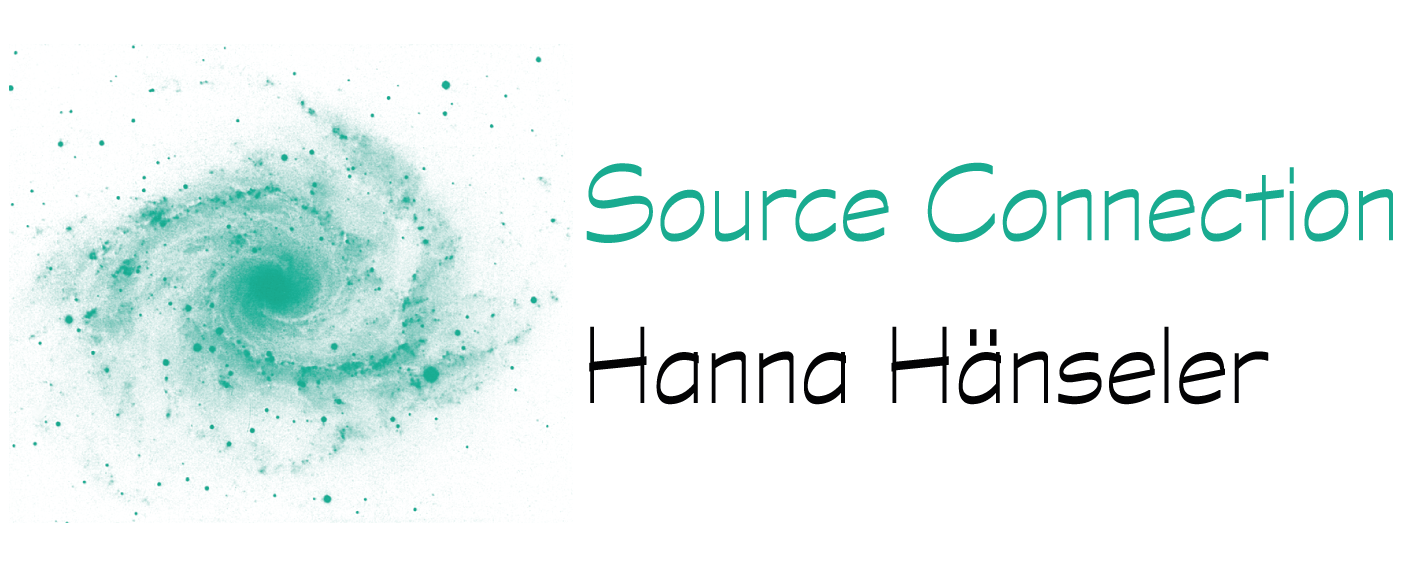Trauma management through gentle and powerful trauma therapy
Natural and effective trauma therapy with Somatic Experiencing®
Somatic Experiencing® is a deeply effective method for processing overwhelming experiences such as shock or trauma. It is based on the belief that people have the innate ability to cope with trauma - similar to wild animals. Somatic Experiencing® strengthens the self-regulation of the nervous system and gives traumatized people back a feeling of vitality, relaxation and wholeness.
Was ist Somatic Experiencing®?
Somatic Experiencing®, also called SE trauma therapy, was developed by Dr. Peter Levine and is a profound method for processing overwhelming and threatening experiences that result in post-traumatic stress disorder or other physical trauma disorders.
Somatic Experiencing® can resolve a state of shock or trauma
Somatic Experiencing® means learning from nature: the innate, but often repressed, instinctive self-healing process also helps people to reduce the enormous stress energy after a trauma. SE trauma therapy can therefore help with a variety of shock and trauma experiences. It is a trauma therapy that is resource and body-oriented. The goal is to regulate and integrate trauma-related disorders in those affected after dramatic experiences. The experience may have taken place several years ago.
- Accidents and other situations in which life was in danger
- Diseases
- Death of a close person
- Experiencing violence
- Situations of loss of control and helplessness
- Overwhelming childhood experiences and childhood trauma
- Sudden, unforeseen and threatening situations
- Experiencing a natural disaster
- War experiences
The body-oriented treatment method for dealing with trauma
Somatic Experiencing® is based on well-functioning resources that must first be built up. Trauma is healed by gradually releasing the immense survival energy that is tied up in the immobility reaction resulting from the shock or trauma. These releases give the nervous system the time it needs and the opportunity to integrate the newly available energy. The overload on the nervous system is reduced. The nervous system regains its flexibility and the trauma symptoms disappear. This process leads to more vitality, joy, connection with oneself and the environment, and to better health.
Are you having trouble getting back to life after an overwhelming experience? Somatic Experiencing® can help you resolve your trauma and relieve your nervous system.
Together we will find a way back to life!
The first step is the most difficult: Make an appointment for an initial consultation. You can call, simply send an email or fill out my contact form. I will then contact you promptly to arrange our initial appointment.
You can also ask someone close to you to arrange a meeting with me for you.
How to reach my practice
The Source Connection practice is located in Bülach, just a few minutes' walk from the train station. You can reach Bülach in 17 minutes by express train from Zurich, and from Winterthur you can reach Bülach in 19 minutes by public transport. If you are coming by car, take the Bülach motorway exit. You will find free parking in the in-house underground car park.
Costs for Somatic Experiencing®
The cost for an initial consultation of about one and a half hours and each subsequent therapy unit of 60 minutes is CHF 150.- each.
Your personal trauma therapy with Somatic Experiencing®
The initial consultation with the trauma therapist
We meet in my practice in a bright, friendly and relaxed atmosphere. In an initial consultation lasting around one and a half hours, we get to know each other and discuss your wishes and expectations. Our first meeting can last longer than the therapy sessions that follow. I want to take the time necessary to listen to you and to discuss our joint approach and my role as an SE trauma therapist. Some of my patients also need to get used to the rooms and to me before they can relax. Everything happens according to your individual rhythm.
Phases of SE trauma therapy
You will then visit me regularly in my practice. In a first step, we will build up your personal resources so that in a second step you can continuously discharge the immense energy that has built up in your nervous system.
It is not necessary for us to talk about the experience that is troubling you. Therapy will be successful even if we only talk about things that you spontaneously want to share. During therapy, you decide at any time what we want to talk about, without me interpreting your issues.
In a safe and comfortable environment, you can decide for yourself which feelings, memories and experiences you want to share. You will not experience anything that makes you feel uncomfortable. Everything you do or say during therapy is right. We will approach things slowly and gradually relieve your nervous system until your trauma symptoms have disappeared. As a calm reference, I will accompany and guide you in dealing with trauma-related disorders. The goal is to integrate the trauma as an experience and to be freed from stressful symptoms. The nervous system is trained so that it can react healthily again in everyday life.
This is how SE therapy sessions are designed
The therapy follows basic principles. However, individual therapy sessions can be structured very differently from one another.
- Self-perceptionYou gradually improve your self-perception: thoughts, feelings, images and physical sensations. Through my targeted questions about your current feelings and physical sensations, you come into contact with yourself. You also learn to recognize healthy boundaries for yourself and others. To do this, we use therapy methods that involve the body. Through practical, lived examples, your nervous system can process the new information better. These are concrete exercises and therapeutic techniques that do not force you to talk about the details of your trauma. However, you can do this at any time when you feel ready.
- Self-empowermentDeveloping self-empowerment is a central part of therapy. Free from shame, guilt and feelings of subordination, finding answers for your small and large decisions in life and being able to make autonomous decisions are all part of the goal of treatment.
- Energy sessionIn the protected environment of the energy session, you practice oscillating between pleasant memories, positively experienced topics, and traumatic experiences in your life without delving into the trauma. This gives the nervous system the chance to renegotiate. Fresh thoughts and feelings arise between the two poles.
- ReorientationA therapy session often ends with a new insight, with orientation in space and with re-orientation in the here and now.
I will accompany you through the slow process of transformation and processing of trauma with compassion and a deep knowledge of human psychology.
What you can expect from SE trauma therapy
- Get rid of or relieve pain
- Improve relationships
- Overcoming fears
- Restore physical balance
- Experience the world more consciously
Founder of SE trauma therapy Dr. Peter A. Levine
Dr. Peter A. Levine is an established physician and psychologist. He has been working with trauma and its devastating consequences for around 45 years. The trauma expert has contributed to the creation of numerous scientific publications on the subject of trauma processing and has taught and worked in European and American clinics.
Biofeedback as a supplement
ButtonMy training in treating patients according to Somatic Experiencing®
I completed my training in Somatic Experiencing® directly with Dr. Peter A. Levine between 2000 and 2003. After three years of training, I am certified as a “Somatic Experiencing Practitioner” (SEP).
The natural self-healing process is supported by SE trauma therapy
The SE trauma therapy developed by Dr. Levine is based on observations of wild animals. Although these animals are exposed to life-threatening experiences every day, they are not traumatized or suffer from post-traumatic stress disorder (PTSD). They have innate regulatory mechanisms to "discharge" the energy mobilized in the fight for survival. Humans have basically the same instinctive abilities, but they rarely succeed in following their natural instincts and reducing the overwhelming stress energy that is mobilized in a threatening situation. This instinctive self-healing process is usually interrupted. Somatic Experiencing® is a way to get back into the natural process of self-regulation.
In his studies at the end of the 1960s, Dr. Peter A. Levine recognized that trauma is not primarily triggered directly by the frightening event, but rather by the physical reaction of the affected person's nervous system. The nature of the trauma is therefore physical. The automatic emergency program continues to run in the nervous system, even when the person has long since returned to safety. This memory of the body is not accessible to the conscious mind, but causes post-traumatic stress disorder with the various symptoms that result from it.
In unforeseen situations, people react with automatic, deep-rooted reactions to save their lives: fight, flight or shock. If these are not completed, they remain stuck in the nervous system and cause long-term problems.
According to Dr. Peter Levine,
"a trauma in the nervous system. It is a biologically incomplete response of the body to a situation experienced as life-threatening. The nervous system loses some of its flexibility. We must therefore help it to regain its full range and strength."
More about Dr. Peter A. Levine
Dr. Peter A. Levine, born in 1942, is a brilliant scientist who combines the disciplines of medical biophysics and psychology. He is considered one of the world's leading experts in the field of trauma therapy. His holistic method of Somatic Experiencing® for healing trauma is taught internationally. He received recognition in October 2010 when he was awarded the Lifetime Achievement Award by the American Association of Body Psychotherapists.
Through his multidisciplinary studies of stress physiology, medical biophysics, psychology, ethnology, biology, indigenous healing practices and neuroscience, he developed his body-oriented approach Somatic Experiencing (SE)®.
Dr. Levine worked for NASA as a stress consultant during the development of the Space Shuttle and has worked as a therapist and lecturer in several clinics and pain clinics in both the United States and Europe. He has developed practical emergency response to major natural disasters and ethno-political wars and is the founder of Somatic Experiencing International (SEI), a non-profit organization that offers professional training in Somatic Experiencing (SE)®.
The scientist and psychotherapist lives in the US state of California and teaches worldwide. He conducts annual training courses in German-speaking countries, as his method is constantly being improved and refined.
A prolific author, Dr. Levine has published numerous scientific articles in medical and scientific journals and has sold over one million copies of his books worldwide.
Among other things, he has written the following books:
- Trauma Healing: Awakening the Tiger. Our Ability to Transform Traumatic Experience. (1997) This is Dr. Levine's first book and probably his most successful. The international bestseller has been translated into 26 languages.
- Language without words. How our body processes trauma and brings us back to inner balance (2010). Translated from the American by Karin Petersen (German 2011). This title is considered the author's masterpiece.
- Free yourself from trauma. How to release mental and physical blockages. This self-help book was published in 2005 (German 2007) and is recommended for people who want to learn more about trauma-related illnesses on their own.
- Trauma and memory. The traces of our memories in the body and brain. How we understand and process traumatic experiences (2015, German 2016). This is Dr. Levine's most recent publication to date.
He was also involved as a co-author in other works:
- With author Maggie Kline: Healing wounded children's souls. How children and young people can overcome traumatic experiences.
- With author Maggie Phillips: Free from Pain. Discover your body's power to overcome pain.
- With author Stephen Porges: SE and Neural Processes
Somatic Experiencing® nach Dr. Peter Levine
SE trauma therapy provides a natural, gentle therapeutic approach to heal stress and trauma-related disorders. No medication is used. Of course, patients who are already taking medication should always consult their doctor about this.
Somatic Experiencing® is a treatment method used worldwide by psychotherapists, neuroscientists and holistic therapists. Better processing of trauma is the focus of interest of all these experts who work with affected people using SE trauma therapy.
According to the research results of Dr. Peter Levine, the seat of the trauma is anchored in the nervous system. Therefore, classic exposure therapy is not used in SE trauma therapy. SE trauma therapists do not work on conscious memories or details of the traumatic event. An approach that brings the patient back into contact with his body is the more promising one. Behavioral therapy, which includes physical processes, is perceived by patients as particularly gentle and pleasant. Retraumatization, actively dealing with childhood trauma and reliving the traumatic events are not necessary to achieve therapy results.
The definition of trauma according to Dr. Peter Levine
Like animals, people rely on their instinctive reaction in exceptional situations: fight, flight or paralysis. This reaction is deeply rooted in us and cannot be consciously controlled. No one knows whether they will instinctively fight, flee or freeze in a dangerous situation, as these are automatic, physical processes. The muscles become active, the heart beats like crazy, the breathing rhythm changes. Or helplessness, paralysis and inability to act set in. These are physical responses to a specific danger.
In acute survival situations, these reactions are appropriate. However, if they become chronic, people develop symptoms of trauma and post-traumatic stress disorder. The body continues to signal danger to the brain, even when the danger has long since passed. The threat is still experienced on a physical level. The body is retrained using the Somatic Experiencing® method. A conscious learning and a targeted transition from feeling helpless and at the mercy of others to regained vitality, harmony and wholeness.
As a biologist, Dr. Levine has researched evolution in the animal kingdom, made numerous observations, and found the roots of our current problems of trauma and PTSD far in the past. The primitive nervous system developed around 400 million years ago in the first marine creatures on earth. Their first reaction to dangerous situations was shock, in which breathing and heart rate stopped. In more advanced creatures, the flight reflex and defense instinct developed. Through an automatic, rapid reaction, dilated pupils and increased heart rate, the animals were able to evade attackers or defend themselves against them. Most recently, in more highly developed mammals, social contacts became increasingly important as protection against predators.
Our brain responds to various positive and negative stimuli with different brain regions. Experiences in which those affected had to struggle with fear, immobilization and helplessness at the same time are particularly dramatic. They are exposed to the fight instinct, the flight instinct and shock at the same time, which leads to a particularly strong overstimulation of the nervous system. This leads to trauma, the consequences of which can also be physical symptoms. For example, the state of shock and paralysis in its chronic trauma form is often accompanied by digestive problems.
Animals can be observed shaking themselves after surviving dangerous situations, they tremble and also appear to suffer from convulsive attacks. It is the animal world's natural method of releasing the energy of shock, which occurs as a last survival reaction. Humans tend not to overcome this phase so easily, the nervous system remains trapped in excitement.
Trauma has physical causes
These are real impairments that cannot simply be "discussed away" by those affected. Social interactions have positive effects, but only physical actions can bring the body, which has been frozen with fear, back to life and free the nervous system from the state of shock and excitement. The SE trauma therapist gently and gradually guides the person to release the excitement blocked in the body.
The natural way of dealing with trauma
Only when the physical energy is back in balance do social interactions have their full, healing effect. This happens when fear and helplessness are decoupled from each other on a physical level under the guidance of the SE therapist. Immobility no longer has to be associated with fear - on the contrary, letting go can be experienced as deeply pleasant and relaxing. For many affected people, working on the trauma from a physical perspective is not only more efficient, but also more comfortable than an approach based on emotions.
Somatic Experiencing®: Symboltier Tiger
The tiger represents the natural power of self-healing that is released during Somatic Experiencing®. It is also the symbol of the life force that is suppressed in trauma and can regain its freedom through healing impulses.
But the animal also has a specific role in the development of Dr. Peter Levine as an SE psychotherapist. It was a therapy session in which the tiger played the role of liberator from fear for Dr. Levine's patient Nancy and inspired the therapist and scientist to deepen his research into SE trauma therapy. Today, his technique has been perfected more and more and has unfolded its powerful and gentle potential.
Symptoms: Trauma and post-traumatic stress disorder
Trauma symptoms are diverse and vary from person to person. They can also be chronic or occur in phases.
Unprocessed trauma can have different consequences: anxiety, panic, sleep disorders, concentration problems, flashbacks, pain, anger and depression. Restlessness, tics, easy excitability, being driven or the opposite feeling of being unable to act can also cause problems for those affected. Inner conflict, self-doubt, feelings of alienation or unreality or the impression of being at the mercy of others can also be among the commonly known post-traumatic stress disorders.
Types of trauma and trauma-related disorders
Traumatic events that threaten a person's integrity, cause them to experience extreme fear and helplessness, and overwhelm their normal adaptation and coping strategies can lead to trauma.
These include actual or threatened experiences of death, serious injuries, extreme danger, a serious accident, but also observing these situations in other people. A distinction is made between type I trauma and type II trauma.
Typ-I-Trauma
This trauma typology involves one-off traumatic experiences. Accidents, natural disasters, surviving unexpected, dramatic events can have long-term consequences for those affected and can manifest themselves in post-traumatic stress disorder.
Type II trauma
Those affected often had to endure ongoing or repeated traumatic experiences. Torture, abuse and violence are among the so-called "man-made disasters". But chronic illness and continuous impairment of health can also be cited as examples. These experiences particularly often lead to profound and severe post-traumatic stress disorders and trauma-related disorders.
Fortunately, not all people who have to go through terrible events are traumatized. Conversely, it is not only experiences that are immediately recognized as extreme that can trigger trauma. Even seemingly harmless medical procedures, a dog bite or witnessing violence (even on television) can have a traumatic effect. It is not the event itself, but its impact on the human nervous system that we must recognize as the cause of trauma.
For example, someone may react excessively to the bang of a glass of water accidentally falling on the floor. Even if they are not aware of it, the shock and overreaction are linked to an event that occurred previously. For example, a small accident months ago in which no one was hurt. However, the body has stored this moment of experiencing imminent danger to life and immediately associated it with the loud noise.
This small example shows how trauma symptoms can become noticeable even years after the traumatic event. And it is not always possible to identify a clear cause for them. But that is not necessary for healing. Because SE trauma therapy focuses on treating the disorder, not identifying its cause.
“Trauma is the most avoided, ignored, denied, misunderstood and untreated cause of human suffering.”
Dr. Peter A. Levine







